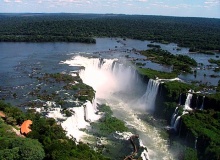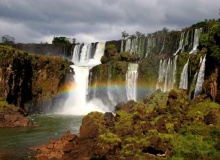Argentina
Buenos Aires | Bariloche | Iguazu Falls
A land of incredible diversity and one of the best value destinations
Travel to Argentina may still be one of the great travel secrets. The country has, arguably, the tastiest beef, the sexiest dance, the most immaculately dressed people, some of the cutest penguins, the highest peak and the most cosmopolitan city in South America.
Add to that the gauchos and plains of Patagonia, world-class trout and salmon fishing, glacier skiing in the Andes and the European sophistication of the capital of Argentina, Buenos Aires—and a trip to Argentina provides a destination with immense potential. Stretching more than 2,000 miles from north to south, Argentina is a land of incredible diversity. Dramatic polychrome mountains and dense cloud forest provide a stunning backdrop for the Spanish Colonial cities of the northwest; farther south, Mendoza’s neat patchwork of vineyards is set against the majestic scenery of the snow-covered Andes. Directly west of Buenos Aires, you will encounter breathtaking vistas in the lake country around Bariloche. And at the continent’s tip, awesome glaciers grind their way through the jagged peaks of Patagonia.
Argentina has earned its good fortune. The country went through economic instability and hyperinflation in the 1990s, then de-linked from the U.S. dollar and restructured its finances. Now, visiting Argentina is one of the best values on the planet: first-world infrastructure, food, wine and service with a unique blend of European culture and North American drive. At last, Argentina has joined the world of appealing travel.
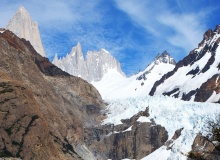
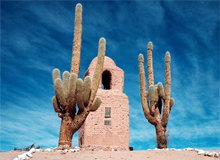
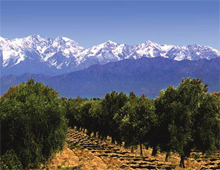
Buenos Aires
Buenos Aires is the most European of all Latin American cities. With its wide boulevards, leafy parks, grand buildings and varied culture and nightlife, the city is reminiscent of Paris or Barcelona. The Porteos (people of the port), as the residents of Buenos Aires are called, seem more European too but this is hardly surprising considering that most are descended from European, predominately Italian, immigrants who settled here in the 19th century. With them came a culture and a cuisine that still gives the city is unique character and can be enjoyed in countless art galleries, theatres and museums, as well as fine restaurants. But the city has also spawned its own art forms, notably the tango, for which Buenos Aires is famous.
Buenos Aires is the third largest city in South America and comprises 47 barrios (neighbourhoods) in which nearly three million people live. Situated in the east of Argentina beside the Rio de la Plata and surrounded by seemingly never ending flat land known as the Pampas, the vast sprawling conurbation is a true 24-hour city.
Buenos Aires has a mild climate and is a year-round destination, although the city can get very hot and humid during the summer months (Dec-Feb). The city can also be quiet during summer as many Porteos take their holidays at this time.
WHEN TO TRAVEL to Buenos Aires
Anytime of year is a good time in Buenos Aires. It has a similar climate pattern to Sydney, with hot but pleasant summers, cool but not freezing winters. Spring time Sept to November and Autumn – March – May are always great times to visit too as a lot of festivals take place during these times.
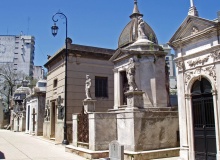
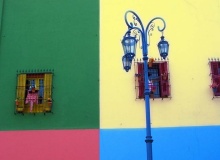
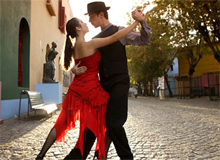
Bariloche
Once a tranquil resort for the Argentine elite, San Carlos de Bariloche is now the Lake District's principal destination. Often referred to as the “Switzerland of South America,” the beautiful Bariloche Lake District occupies the pristine northern corner of Patagonia near the rugged Chilean border. It has a European ambience because of the original Swiss and German settlers. Majestic snowcapped peaks, crystalline blue lakes, waterfalls, ancient forests and colorful wildflower meadows punctuate the breathtaking wilderness landscape protected by a vast network of national parks and ecological reserves.
Famous for skiing in winter and myriad summer outdoor activities such as sailing, kayaking and trout fishing, Bariloche teems with restaurants, shops and nightclubs. But drive a short way out of town, and you enter a majestic landscape that is empty and unspoiled.
Bariloche is also the chocolate capital of Argentina - the amount of storefront window space dedicated to fresh chocolate is exhilarating. Away from the downtown bustle of souvenir shops and boutiques, the surrounding area also offers spectacular hiking and rafting.
WHEN TO TRAVEL to Bariloche
When to travel depends on why you travel to Bariloche. The ski season runs from July to September and temperatures can range between 2 and -10 degrees. Spring in Bariloche is still quite cool but still beautiful with flowers and a popular time to go fishing. Summer is very pleasant with sunny warm days and cool nights. So in short – any time of year is a good time to travel to this region.
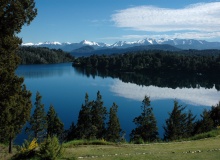
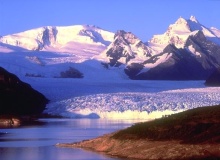
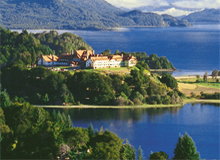
Iguazu Falls
The spectacular Iguazu Falls, on the borders of Brazil, Argentina and Paraguay and 1,060 km north of Buenos Aires, are best seen March-June. Made up of 275 cascades spanning a distance of 3 km and rising up to 90 m high, it's one of the most impressive sights in the world. Rainbows, roaring waters, red earth and jungle scenery make it worthy of a long stop—enough time for real contemplation.
Iguazu Falls are more easily seen from Brazil, but the paths, jungle and sunset views are better in Argentina, and the falls are much closer to you.
Visitors on the Argentina side should see Iguazu falls from both access points: the lower trail, which twists through the rain forest to a boat that takes you on a five-minute ride to Isla San Martin, at the base of the southern end of the falls; and the upper trail, which ends at the edge of Devil's Throat, the most dramatic view of the cascades. You can also reach the two areas by bus, but in either case, be prepared for a lot of (fairly easy) walking and a good chance of getting wet.
The area surrounding Iguazu Falls is a showcase for a wide variety of colourful birds, butterflies and flowering plants. Good hotels are available on both sides of the Argentina-Brazil border, and it's worth the extra expense to stay at a hotel with a view of the falls. Try to stay at least one night to take advantage of changing light conditions. Sunset on the surrounding terrain is magnificent and by moonlight it's simply magical.
WHEN TO TRAVEL to Iguazu Falls
Iguazu Falls has a humid subtropical climate without dry season, with temperatures ranging from 20º C to 33º C in Summer; while Winter is mild and pleasant. Best time to travel is during the wet season January to March where the flow of the waters is significantly increased.

